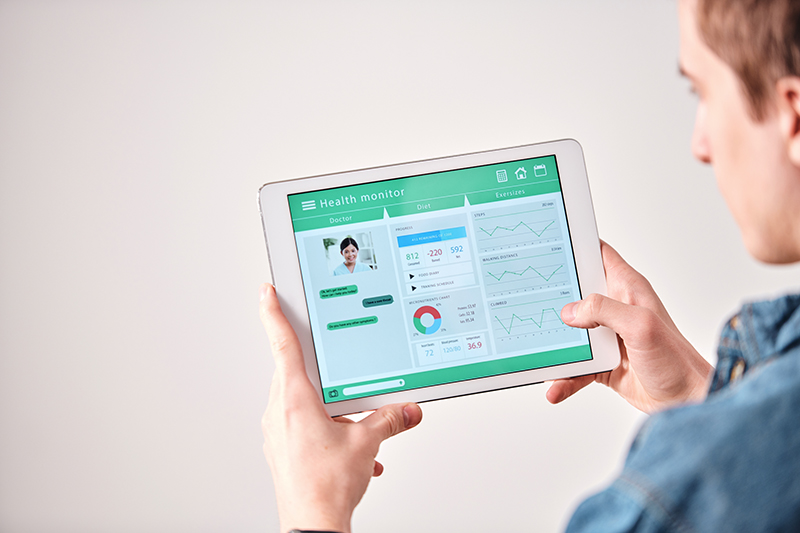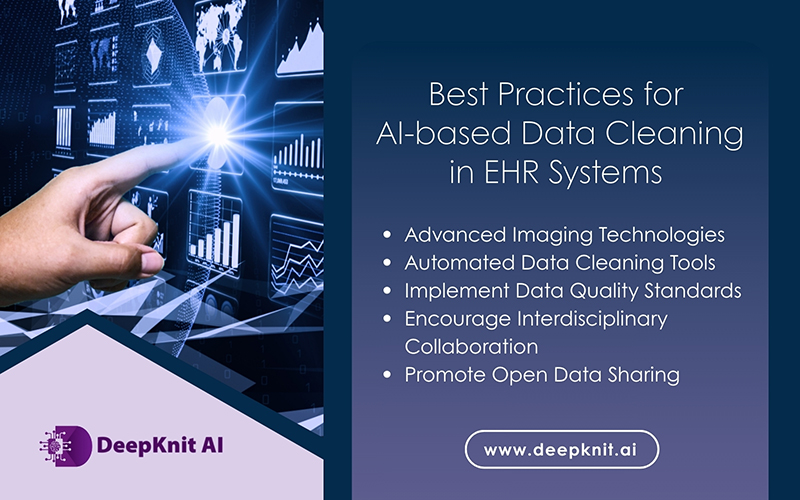Maintaining proper and structured health records plays a vital role in providing accurate and efficient healthcare to patients. Discrepancies in these records like duplicate entries, inaccuracies of potentially critical information, or outdated or missing values, will obscure the decision-making ability of the concerned medical professional. This is where AI to clean and standardize patient data becomes important.
Data is the lifeline of automation in healthcare and before you deploy any AI or automation tool, you need to make sure that the data you’re feeding is clean. Though technology can enhance the overall operability and experience of both patients and healthcare professionals, even the most advanced technological solutions cannot perform well if they are backed by messy, inconsistent, or incomplete data.
Studies show that organizations spend up to 80% of their time cleaning and preparing data, leaving only about 20% for actual analysis. This not only consumes substantial resources but also increases the risk of errors that may undermine the reliability of the outcome.
Hence the importance of using AI for cleaning data cannot be understated and would be a step in the right direction when it comes to improving the efficiency and effectiveness of an automated healthcare system.
AI-driven Data Cleaning and Standardization
To put it in simple terms, data cleaning and data standardization aim to correct, validate, and neutralize anomalies in patient records to enhance accuracy, improve efficiency, save time, and minimize risks. In healthcare automation, data cleaning involves reviewing and validation of these Dee to ensure maximum accuracy. This process may include:
- Consolidate or remove duplicate and irrelevant entries
- Identify and handle missing values or incomplete information
- Filter data points that deviate considerably from the norm
- Address inconsistencies such as erratic data types, data structure issues, and formatting issues
- Verify the accuracy and consistency of the cleaned data for data integrity
- Perform QA checks to identify any errors or non-standard elements that remain
- Standardize data input and storage formats
In data standardization, the data is converted into a standard, uniform format so that it remains consistent across diverse data sets. This makes it easier for computer systems to understand. It helps speed up data processing, data storage and data analysis.
Here are the different data standardization steps.
- Identify all relevant data sources or systems where data is stored
- Understand the existing structure and format of the available data
- Develop a data dictionary that gives details regarding standard data formats, naming conventions, acceptable values for key data formats and so on.
- Create data type standards, i.e. describing how data types such as numbers, dates, text and so on must be represented across all sources.
- Establish clear rules for data validation, which includes data formats, acceptable ranges, connection between data and elements and so on.
Regular data cleaning needs to be made a compulsory exercise so as to ensure that healthcare professionals have the most accurate information when making treatment decisions.
Benefits of Using AI in Healthcare Data Cleaning
AI cleaning is 10X faster than manual
While dealing with large sets of data, manual cleaning methods like scanning spreadsheets and other docs, comparative analysis, writing formulas and using find-and-replace methods can be time consuming and even inefficient. An AI-powered model can get this done in a matter of seconds or much faster than what it might take to manually accomplish this, and that too with much better precision and efficiency. Automated data entry also eliminates the need for repeated manual corrections as AI can continuously monitor and clean incoming data.
AI can detect and fix anomalies in real time
Real-time error detection in healthcare data using AI is a major advantage as this can instantly detect anomalies, outliers and faulty or incomplete datasets thereby securing your reports of business decisions from getting influenced by inconsistent data.
Optimize cost and time
Using AI to clean and standardize patient data can help you reduce labor costs, IT expenses and time taken to fix faulty or insufficient data. Healthcare professionals can spend more time on patient care instead of error correction.
Eliminate duplicate entries
AI-powered duplicate detection in patient records can avoid the slightest variations (e.g. “Jane Dow” vs “Jane E. Dow”) and merge the redundant data with the accurate or the original thereby helping maintain the most relevant version of the record. You can also include custom rules in AI to prevent duplicates from being added in future.
Data Standardization
Data coming from different regions across the globe can have different formats for mentioning dates (DD/MM/YY or MM/DD/YY, or YY/MM/DD etc.), phone numbers, currency ($ or US or INR or GBP etc.), measurement units (kg or lb., cm or inches) etc. AI in data entry automation can easily convert it to a standard format you need it and store the data accordingly thereby eliminating confusions while processing them later.
Best Practices for AI-based Data Cleaning in EHR Systems
Advanced Imaging Technologies
Adopt advanced imaging technologies that produce high-quality, standardized data, streamlining integration into your healthcare system and reducing the need for intensive data cleaning.
Automated Data Cleaning Tools
The role of machine learning in automating data cleaning is critical and the use of automation tools to accelerate the data cleaning process, would ease the workload on the people involved in the process and lower the risk of errors.
Implement Data Quality Standards
Create and follow consistent protocols for data collection, storage, and analysis to improve the accuracy, consistency, and reliability of healthcare research datasets.
Encourage Interdisciplinary Collaboration
Bring together data scientists, healthcare providers, and technology specialists to adopt a comprehensive approach to data management that effectively addresses the specific challenges of healthcare datasets.
Promote Open Data Sharing
Foster transparency and collaboration by encouraging researchers to openly share cleaned, anonymized datasets. This accelerates healthcare interoperability and enables the broader scientific community to validate and build upon existing findings.
Collaborate with DeepKnit AI to ensure data excellence
AI is quickly transforming healthcare by enhancing patient care, streamlining administrative processes, and lowering costs. However, the full potential of AI for improving healthcare data accuracy can only be realized with access to clean, standardized data, and this is where DeepKnit AI can help you.
DeepKnit AI’s powerful AI agent and model would redefine your data management system by automating the extraction, analyzing, and classification of data. Leveraging advanced AI and OCR technologies, our solution simplifies data entry and optimizes workflows for greater efficiency and accuracy.
DeepKnit AI combines Natural Language Processing (NLP) with advanced Machine Learning algorithms to deliver intelligent medical data accuracy. Engineered to reduce errors and uphold data integrity, our AI model seamlessly handles tasks ranging from basic form completion to managing intricate databases, making it a scalable solution for any data-driven enterprise.
Make your data management system efficient
Let your data be error-free and intelligent.
Try Now


